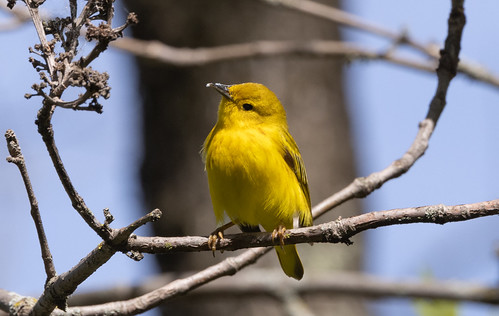Review: A Warbler’s Journey by Scott Weidensaul, illustrated by Nancy Lane. The Gryphon Press. Release Date May 14, 2022.
Sometimes I fall in love with a bird book after reading a brief synopsis, but the anticipation more often exceeds the actual event. I was very excited to hear that Scott Weidensaul had written a children's picture book, but in this case, I love the actual book even more than I'd hoped or expected. A Warbler’s Journey will be released by the Gryphon Press on May 14.
Scott Weidensaul is a hero of mine—he’s done seminal research on some of my most beloved hummingbirds and owls, and he wrote the Boy Scout handbook that my sons used when they were working on their Bird Study merit badge and that I used as a Girl Scout leader. He’s also a Pulitzer Prize finalist whose many books have raised the standards for writing for about birds, and he’s the very best speaker I’ve ever heard, with a rich sense of humor and the ability to convey to any audience solid, in-depth information in a simple, straightforward, and engaging way.
His new picture book is the story of a female Yellow Warbler’s arduous trip from her wintering home on a coffee plantation in Nicaragua up to the Yucatán Peninsula, all the way across the Gulf of Mexico to a backyard on the Gulf, and then up to Great Slave Lake in the Northwest Territories. A map before the story begins and a note at the end give adult readers a sense of place and information about how to help migratory birds, which we can share with children as it seems appropriate, while the story itself is understandable for even small children. Weidensaul alternates between the warbler’s viewpoint, giving the reader a rich sensory description of the warbler’s experiences, and the viewpoint of three children who see the tiny bird at the start, middle, and end of her journey.
In Nicaragua a girl is helping harvest coffee when she notices the bird. Her grandfather explains how these tiny birds arrive in November at the start of the coffee harvest and leave in March as the harvest ends, and tells her that the warblers eat insects that hurt their coffee trees.
That night, the warbler takes off and flies all night, and does that every night for the next week until she reaches the Gulf. “She knew, deep inside, she needed to fly over that water, but she also knew she was not yet ready.” During the next five days she eats constantly. “Under her feathers she grew plump and heavy.”
A week later, she takes off as the sun set. The simple but vivid description of that night flight is wonderful. In the morning, she hasn’t reached land before hitting a treacherous storm. “She was tired, but she was strong. This was what she was meant to do.”
When she finally reaches land, she must find a “welcoming place” without buildings and roads and endless lawn. She comes to a “splash of shady green” and flutters down. Here a boy helping his grandmother plant her garden sees the bird, and his grandma explains, “That’s a yellow warbler, the first one I’ve seen this spring. She must have just arrived, flying all the way from Mexico across the ocean. Imagine that!”
The warbler flies at night for weeks. One night she stops in a swamp with alligators and Barred Owls, and sometimes she ends up in farm country where she rests in pasture thickets. Finally, she comes to the place where she had started her life and hears her mate singing. Later in the day, a little girl, walking home with her parents after a celebration that set aside and protected important land for her People, sees the bird alight in willow and hears her mate singing. “The girl was glad the land was safe not just for her family but for the birds and all the animals the People depended on.”
Nancy Lane’s beautiful paintings are charmingly simple while meeting my exacting standards for accuracy. My copy right now is digital, but the book will be out in mid-May when Yellow Warblers are starting to appear here in Duluth, and I’m sure I’ll see them when I’m out with my little grandson. Walter will be like that little boy on the Gulf except younger, and I'll be like his grandma, explaining that each Yellow Warbler we see will have already flows thousands of miles. Some will be stopping here in Duluth or nearby, and others will be continuing on for dozens or hundreds more miles. Imagine that!
I can’t wait to share this book with him.

